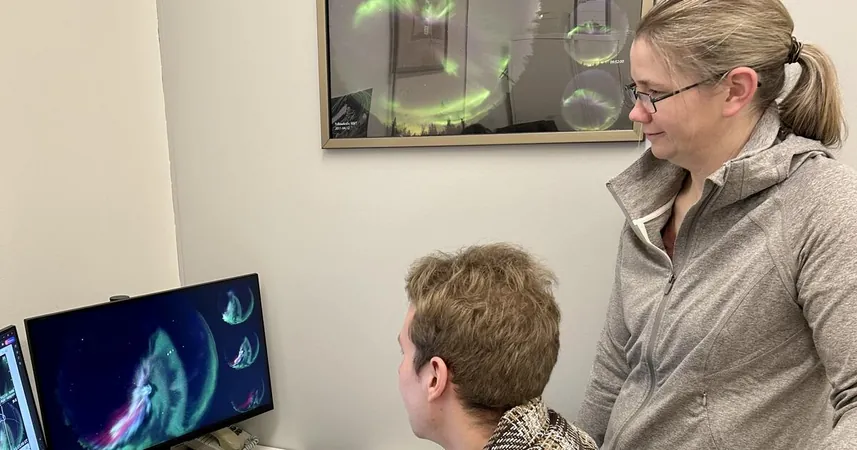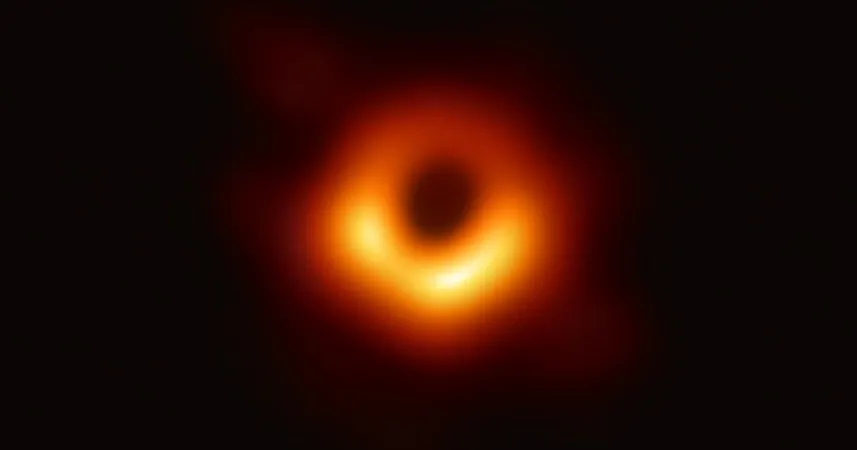
Unraveling the Mystery: What’s That White Patch in the Northern Lights? UCalgary Scientists Weigh In!
2025-01-10
Author: Emily
Unraveling the Mystery: What’s That White Patch in the Northern Lights? UCalgary Scientists Weigh In!
In an exciting breakthrough, researchers from the University of Calgary have unveiled the mystery behind the elusive whitish-grey patch often spotted in the sky alongside the mesmerizing northern lights. This revelation, published in the prestigious journal *Nature Communications*, brings to light what scientists describe as a “structured continuum emission” associated with the stunning aurora borealis.
Dr. Emma Spanswick, the lead author and an associate professor in the Department of Physics and Astronomy, elaborated on the phenomenon. “When you gaze upon the vibrant green hues of the aurora, or even catch a glimpse of the reds in the backdrop, there’s a striking grey or white patch that appears,” she explained. “Naturally, the scientific community’s first response is, ‘What is that?’”
Previously documented in various scientific papers, this particular white patch had baffled scientists for years without a clear explanation. However, Spanswick and her team have concluded that this enigmatic patch is “most certainly a heat source,” proposing that the complexities of auroras are far more intricate than previously understood.
Thanks to significant advancements in camera technology, both amateurs and professional scientists are now able to capture true color images of the night sky. “With modern digital photography, even your cellphone can snap breathtaking aurora shots,” noted Spanswick. She highlighted that these advancements have extended to the commercial sensor market, benefitting scientific endeavors alike.
This research aligns with a renewed focus on continuum emissions, sparked by observations of STEVE (Strong Thermal Emission Velocity Enhancement), a glowing ribbon of purple light in the sky. “What we’re observing now shares similarities with STEVE,” Spanswick noted. “While STEVE manifests as a distinct mauve band across the sky, the white patch appears interconnected with more dynamic auroral activity.”
Adding to the significance of this research is the involvement of three students from UCalgary, including undergraduate Josh Houghton, who began working as an intern on the project. “I was initially learning and adapting, but I quickly became deeply immersed in the analysis,” Houghton shared, referring to his groundbreaking experience. His efforts contributed to the team’s publication in *Nature Communications*, showcasing the remarkable opportunities for undergraduate students in scientific research.
Looking ahead, Houghton plans to extend his investigation into this phenomenon as part of his undergraduate honors thesis before embarking on a master’s degree at UCalgary next year.
This groundbreaking work was made possible through the Transition Region Explorer (TREx), a collaborative project funded by the Canadian Foundation for Innovation, the Government of Alberta, and the Canadian Space Agency, highlighting the vital intersection of education and innovative research in the ever-enigmatic realm of auroras.
Stay tuned for more astonishing discoveries in the field of astrophysics and the mysteries of our universe!









 Brasil (PT)
Brasil (PT)
 Canada (EN)
Canada (EN)
 Chile (ES)
Chile (ES)
 Česko (CS)
Česko (CS)
 대한민국 (KO)
대한민국 (KO)
 España (ES)
España (ES)
 France (FR)
France (FR)
 Hong Kong (EN)
Hong Kong (EN)
 Italia (IT)
Italia (IT)
 日本 (JA)
日本 (JA)
 Magyarország (HU)
Magyarország (HU)
 Norge (NO)
Norge (NO)
 Polska (PL)
Polska (PL)
 Schweiz (DE)
Schweiz (DE)
 Singapore (EN)
Singapore (EN)
 Sverige (SV)
Sverige (SV)
 Suomi (FI)
Suomi (FI)
 Türkiye (TR)
Türkiye (TR)
 الإمارات العربية المتحدة (AR)
الإمارات العربية المتحدة (AR)